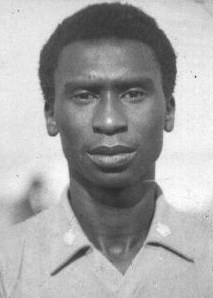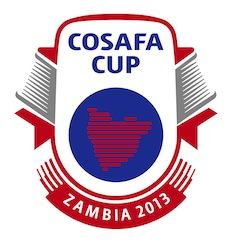Playing career
This section of a biography of a living person needs additional citations for verification .(November 2022) |
After his junior secondary education, Stephenson transferred to King George VI High School in Kabwe where his history teacher Glyn Peters played a key role in his soccer career. Peters was Stephenson's history teacher and also the Zambia Secondary Schools Association (ZASSA) secretary and he encouraged Stephenson to take his career further.
Stephenson joined Kabwe Warriors in 1967 and made his league bow in a match against Mufulira Blackpool and he won the Castle Cup in his first season. He was chosen to play for the school team which was involved in the Midlands schools league that was dominated by Munali Secondary of Lusaka with King George VI often coming out second though they also won the league title. After the schools league championship, Stephenson was selected by ZASSA to represent Zambia in Malawi in 1967. The team had the likes of George Mungwa, Peter M'hango, Moses Simwala, Gibby Zulu, Edward Musonda, Emmanuel Mwape, Willie Phiri, Poni 'Express' Muyambango and Ackim Musenge, and was coached by John Green who would later become the Zambia national team coach.
Before departure for Malawi, the schools team played a game against the senior national team at Scrivener Stadium in Kitwe and won 4–1. On their Malawian tour, they played 3 matches against various schools and won all of them by wide margins. It was then decided that they should play first division teams and the Zambians won two games and only lost the last one 1–0 against a strong club side Zomba United. Stephenson won the league title with Warriors in 1968, which was the first time in the club's history.
After completing school in 1968, Stephenson concentrated on playing football at Warriors. He was employed by Zambia Railways as an Assistant Statistician and was later named club captain, a task which he carried out with distinction considering that at one point, Warriors contributed no less than seven players to the national team. The level-headed and hard-working midfielder successfully led a star-studded Warriors team and his fine performances for both Warriors and the national team earned him a nomination for the Footballer of the Year award in 1971. Upon his return from Kenya where Zambia lost the Jamhuri cup to the hosts, Stephenson discovered that the shortlist had been pared down further when the organizers decided to remove the names of all those who had faced disciplinary action during the season. This knocked out Dick Chama, Godfrey Chitalu, Dickson Makwaza, Emment Kapengwe and Philip Tembo, and Stephenson won the prestigious award. The elated Stephenson said it was the greatest moment of his career and that he was so proud to have won the award.
He won the league on 4 occasions and playing alongside big names like Chitalu, Boniface Simutowe, Sandy Kaposa, Edward Musonda, Gibby Zulu and Fred Ngulube, and was part of the Warriors team of immortals that swept all the silverware on offer in 1972.
In 1976, he was transferred to Ndola and started playing for Warrior's sister club Raylton United where he was noticed by Arthur Davies, the general manager of the Copperbelt Power Company (CPC), sponsors of Power Dynamos who invited him to join the team. He joined Dynamos in 1978 and was assistant player-coach until 1981 when he retired from active football.










